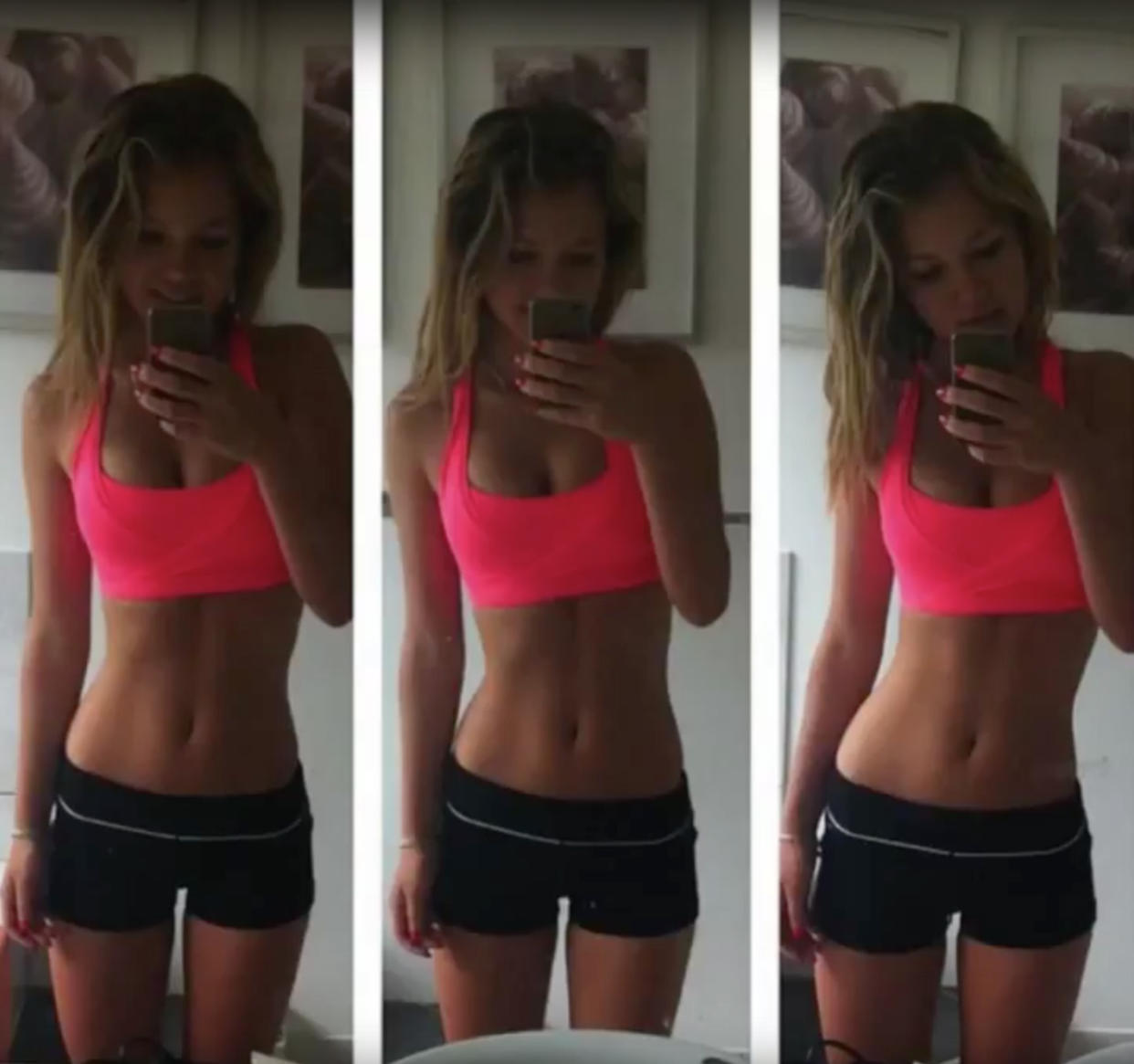Instagram Star Essena O’Neill Unveiling Her Restrictive Diet May Backfire

The photos Essena O’Neill used in her “You’re My Inspiration” video about speaking out against her rigid diet. (Source: YouTube)
19-year-old Australian Instagram celebrity Essena O’Neill has been going viral in recent weeks due to her new campaign to unravel the world of false images that social media glorifies. In one of her latest videos, “You’re My Inspiration,” she discusses, in great detail, her former methodology for achieving a “dream” body. The title of the video comes from fans telling her that she was their inspiration for body image. She describes how she restricted her calories by eating “really, really, really small meals” or skipping meals entirely, and that she would motivate herself by saving photos of models from Google, Tumblr, and Pinterest on her phone. “I would look at these images and I would put them on my phone screensaver and I would use them as a reminder to be strong, and strong to me at that time meant skipping meals. It meant eating as little as I could,” she said in the 14-minute video, which consisted of a voiceover with three static selfies in a sports bra and short shorts. But unfortunately, by describing in great detail her own methodology for successfully achieving a certain body type juxtaposed against her own image, O’Neill is missing the point against speaking out against an image-obsessed culture — and she may even be providing additional inspiration fodder for those who are already inclined to see O’Neill as aspirational. “She’s giving people the how-to manual to follow in her footsteps,” Maryland-based eating disorder therapist Sarah Blake tells Yahoo Beauty. “If someone does not have a genetic predisposition to an eating disorder, they won’t be affected by the video. But they will if they do have the disposition.”
London-based writer Kelsey Osgood wrote her 2013 memoir about her eating disorder, How to Disappear Completely: On Modern Anorexia. In the book she describes how she became inspired to have an eating disorder after watching a Lifetime film and reading a novel with a character that had an eating disorder. Osgood also cited Marya Hornbacher’s Putlizer Prize-winning autobiography Wasted: A Memoir of Anorexia and Bulimia as a resource amongst many anorexics among her own generation, even though that was not Hornbacher’s intent at all. Many of these texts romanticized the anorexic as tragic — but also special or beautiful. “Follow my lead, kids, and you can be as good as (if not ‘better than’) me. This was, of course, not what [Hornbacher] said in her writings, but it was what some young ones heard,” Osgood wrote. “Hornbacher imagined dieting, and later anorexia, with all its romantic Victorian ‘fasting girl’ connotations, as a route to Specialness, ‘like hopscotch.’” Many anorexics like herself, as Osgood notes, consumed all the information they could find on eating disorders, whether they were deliberately “pro-ana” or accidentally aspirational. When working with her patients, Blake only recommends two specific books about eating disorders. “They’re the only ones that don’t get specific about the methods,” she explains.
O’Neill’s videos and images add nothing new to the canon available to those looking for “guidance,” but in her retaliation against her own images, she could possibly be more effective. “I can think of one agonizingly obvious way,” Osgood explains. Instead of just having the entire video be a still shot of her at 16 in teeny work-out shorts, maybe she should have shown herself in “real time” speaking candidly at the camera.” Osgood also suggests that she could have written something instead of communicating through selfies, since she is speaking out against selfie culture. “I get that she would want to show the photo briefly to fully illustrate the issue at hand, but most of us probably get the idea after all of ten seconds,” Osgood says. “I don’t think it means we shouldn’t have these kinds of conversations about the meta-consequences of our image-obsessed culture — I just don’t think we should do that with the problematic images themselves.”
Blake agrees — one of her favorite videos to show patients is a 2006 commercial by Dove, which unveils the entire process of a photoshoot, from blotchy makeup-less model to glamorous billboard. “It can really help people to know that these images take a lot of manipulation,” she says. “Those are the things that would be helpful, versus ‘let me show you these short shorts…and tell you it’s not real anyway.’”
However, Osgood does not feel that Essena’s video will inspire anorexics: “I don’t think she’s actually endangering those individuals at-risk further; far more specific information about how to maintain an unhealthy body is freely available via all sorts of outlets, and the people likely to be triggered or ‘inspired’ or whatever by Essena’s video have probably already come into contact with that specific information.”
Related:
After Dropping Sponsors, Instagram Star Essena O’Neill Asks For Money
Rowan Blanchard of ‘Girl Meets World’ Says Social Media Is Fueling the Feminist Revolution
Selfies, Social Media, and Self-Esteem: Dove Launches New Confidence Campaigns

